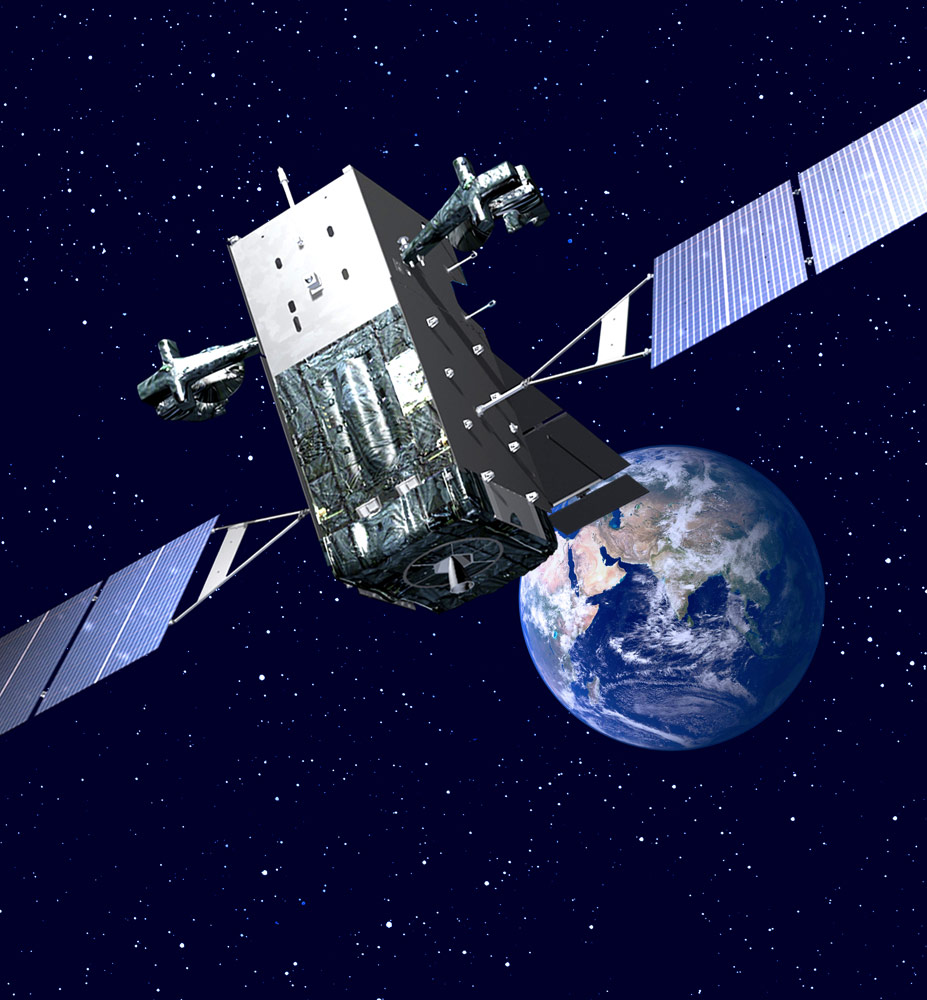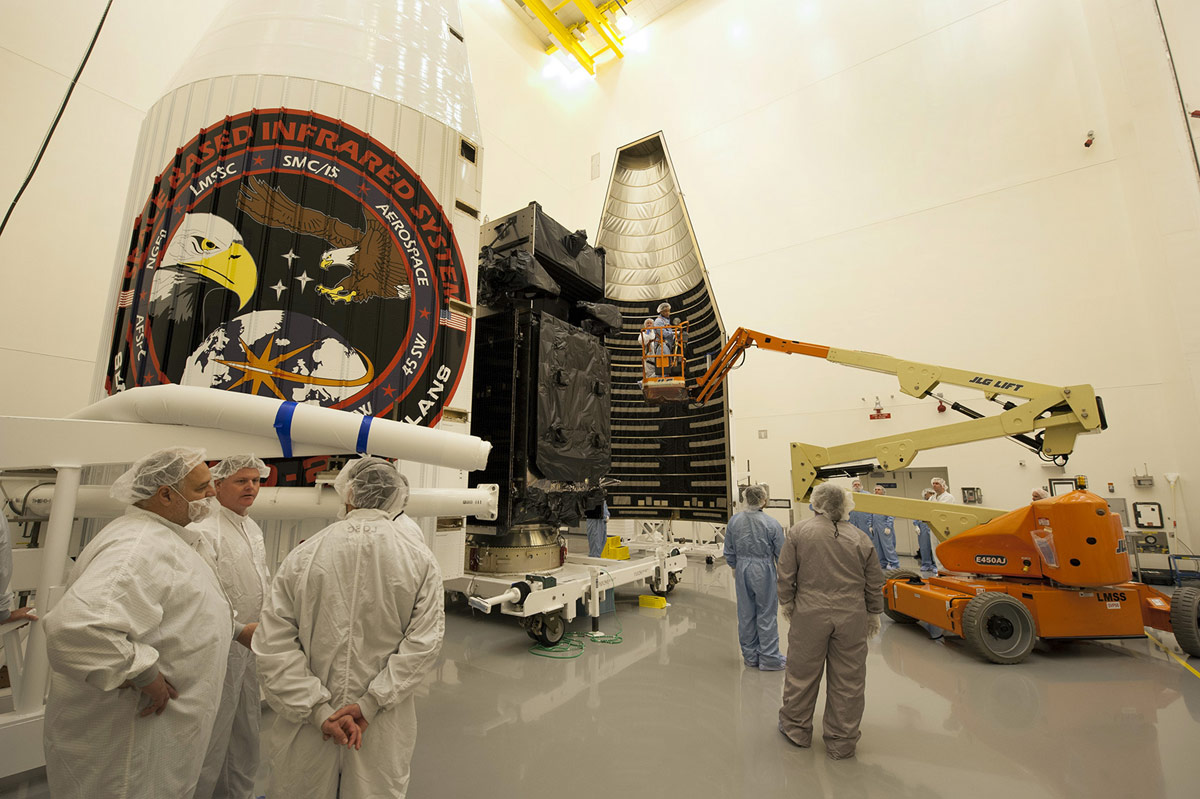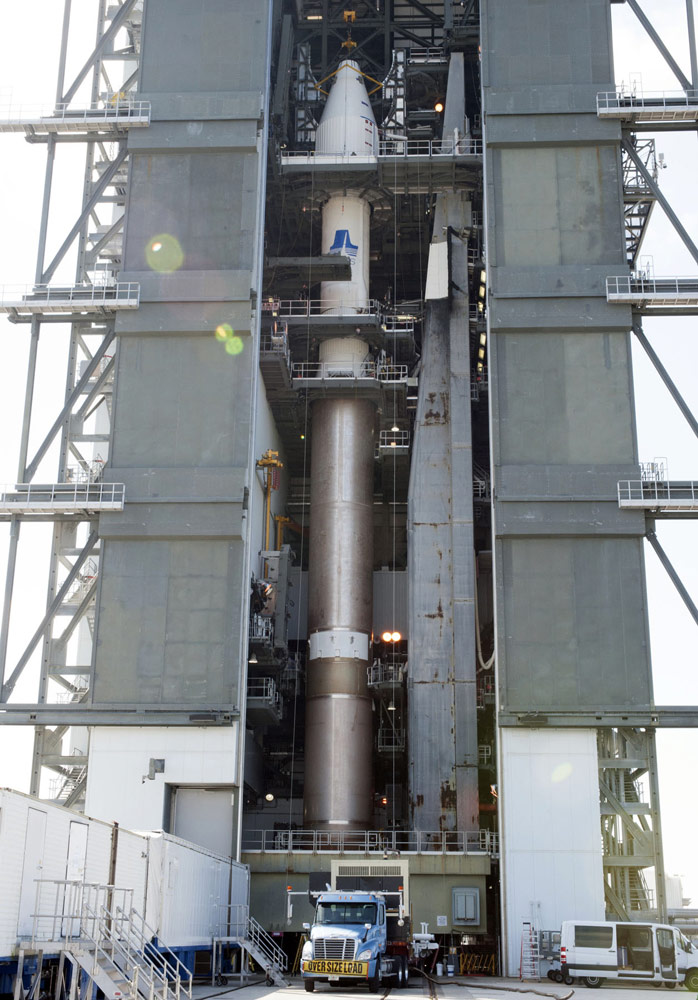New US Missile Defense Satellite Launching Tuesday

Highly sophisticated infrared eyes to spot incoming enemy missiles against the United States and its allies will rocket into space Tuesday atop a United Launch Alliance Atlas 5 booster from Cape Canaveral.
Destined for a classified position somewhere in orbit 22,300 miles above the planet, the Air Force's second Space Based Infrared System Geosynchronous satellite, known as SBIRS GEO 2 for short, will further upgrade the nation's surveillance network to detect and track missile launches around the globe.
"Our ability to provide strategic missile warning is critical to the nation's survival," says Gen. William Shelton, leader of Air Force Space Command.
Devised in the Cold War to provide warning of intercontinental ballistic missiles launched at the U.S., this national security space project has broadened to cover short-range missiles and threats facing troops on the modern day battlefield. [Top 10 Space Weapons]
"I would argue that the nation's missile warning system is critical now, or perhaps even more so, than it was even during Cold War," said Col. Jim Planeaux, director of the Infrared Space Systems Directorate at the Air Force's Space and Missile Systems Center.

"Certainly strategic and tactical missile threats have proliferated in both number and type, (and) the number of countries that own these systems has increased. So with SBIRS our core mission continues to be that missile warning, and we're modernizing the nation's systems so that we remain highly capable against today's threats, just as we have through the 40 years of DSP legacy, and we'll continue to meet the needs of our national leadership, decision makers, our warfighters and our allies."
You can follow the launch in Spaceflight Now's Mission Status Center with journal updates and live streaming video.
Get the Space.com Newsletter
Breaking space news, the latest updates on rocket launches, skywatching events and more!
Once the system detects a target, it determines the flight trajectory and where a hostile missile will hit, giving warfighters the necessary alert to intercept the weapon as part of the OODA loop (Observe, Orient, Decide and Act). The satellite launching Tuesday will work to expedite that time-critical sequence by identifying faint missiles faster and allowing forces to engage sooner.
In 2011, early-warning surveillance was used "to alert our forces and those of our global partners to nearly 200 missile launches and to report an additional 7,100 special infrared events. And I believe with some of the activity we're seeing around the world even this year, we're seeing an increase in the number of global missile launches," Planeaux said.
On Friday, Defense Secretary Chuck Hagel announced deployment of additional missile interceptors in Alaska to guard against increased threats from North Korea and Iran.
"The United States has missile defense systems in place to protect us from limited ICBM attacks, but North Korea in particular has recently made advances in its capabilities and has engaged in a series of irresponsible and reckless provocations," Hagel said.
Starting in 1970, the Pentagon deployed a long line of spinning satellites for the Defense Support Program, or DSP. The infrared telescopes continuously scanned the globe looking for the super-heated exhaust plumes emitted by missiles, allowing that information to sound the alarm for the nation's leadership and military commanders. [How Missile Defense Satellites Watch the World (Video)]
By the mid 1990s, the Air Force selected Lockheed Martin to develop the Space Based Infrared System and use new technology to greatly advance the monitoring efforts by making quicker detections of dimmer objects.
The new system would fly "hosted" surveillance payloads on secret spy satellites in highly inclined Earth orbits to observe the northern latitudes and dedicated SBIRS spacecraft parked in geosynchronous orbit 22,300 above the equator for mid-latitude coverage.
And unlike the previous generation of Defense Support Program missile warning satellites that have only scanning sensors, the SBIRS GEO spacecraft would be equipped with two Short Schmidt telescopes for both scanning and staring instruments to increase the amount of reconnaissance that could be collected.

The windshield wiper-type scanner gives a wide view of the planet below and the starer can be tasked to observe a very specific region for emerging threats and fast-moving targets.
Building the complex system, however, ran into lengthy delays and cost vastly more than originally envisioned.
The first highly elliptical orbit hosted payload, known as HEO 1, finally went into space from Vandenberg Air Force Base, Calif., in 2006, a full decade into the development effort. HEO 2 followed from Vandenberg in 2008.
Getting the first GEO off the ground from Cape Canaveral came in May 2011, bringing the modernized enhancements to the surveillance network.
The second GEO awaits blastoff from the Cape on Tuesday at 5:21 p.m. EDT.
GEO 1 has gone through rigorous testing and trial runs to prove its data can be trusted, and project officials say it should be fully accepted into the operational fleet later this year.
"Based on GEO 1's on-orbit performance to date, we expect GEO 2 to also provide exceptional improvements to global and theater mission capabilities to our warfighters and the nation," Planeaux said.
Lockheed Martin is building four GEO satellites and four HEO payloads, and anticipates beginning production of GEOs 5 and 6 this year, to replenish the orbiting constellation as aging DSP spacecraft fade out. The military won't say exactly how many remain in service.
"SBIRS improved sensor technology and ground processing capabilities enable us to respond to growing needs, evolving threats, and will serve us as the foundation of the nation's overhead infrared constellation for many, many years to come," Planeaux said.

Copyright 2013 SpaceflightNow.com, all rights reserved.
Join our Space Forums to keep talking space on the latest missions, night sky and more! And if you have a news tip, correction or comment, let us know at: community@space.com.
Justin Ray is the former editor of the space launch and news site Spaceflight Now, where he covered a wide range of missions by NASA, the U.S. military and space agencies around the world. Justin was space reporter for Florida Today and served as a public affairs intern with Space Launch Delta 45 at what is now the Cape Canaveral Space Force Station before joining the Spaceflight Now team. In 2017, Justin joined the United Launch Alliance team, a commercial launch service provider.










